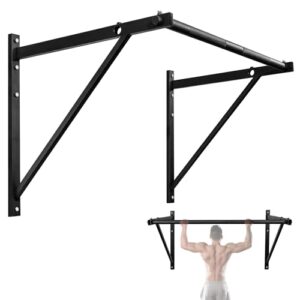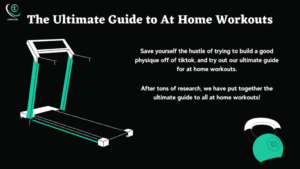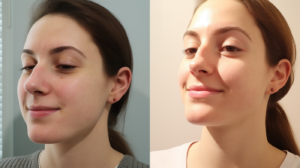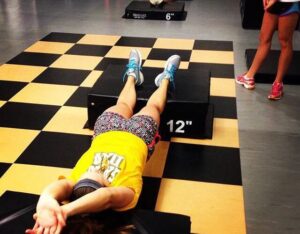Restorative Yoga involves gentle poses designed for relaxation and healing. Key poses include Child’s Pose, Legs-Up-the-Wall, and Corpse Pose.
Restorative Yoga is a calming practice ideal for stress relief and deep relaxation. Unlike more vigorous styles, it encourages physical and mental balance through passive stretching. Practitioners often use props like blankets, bolsters, and blocks to support the body in sustained, comfortable positions that encourage release and relaxation.
By holding poses for longer periods, typically five to twenty minutes, Restorative Yoga allows you to tune into your breath and deeply relax your body. This approach helps to trigger the parasympathetic nervous system, which reduces stress hormones, lowers heart rate, and supports digestion, fostering an environment for healing and rejuvenation. Beginners and experienced yogis alike benefit from this gentle practice, making it an inclusive method for cultivating tranquility and overall well-being.
The Essence Of Restorative Yoga
The Essence of Restorative Yoga lies in gentle stretches and mindful breathing. This form of yoga invites calmness and healing. The aim is to release tension both physically and mentally. Restorative Yoga poses nourish the body’s relaxation response. This helps in rejuvenating the spirit.
Origins And Philosophies
Restorative Yoga has roots in ancient yoga philosophies. It blends traditional yoga poses with meditative practices. This combination leads to deep relaxation. The philosophy believes in healing through stillness. Key components include props like bolsters and blankets. These support the body in various poses for extended periods.
Complementary Practices For Holistic Wellness
Restorative Yoga integrates with other wellness activities for holistic health. Meditation enhances the restorative process.
- Aromatherapy – uses essential oils to boost relaxation.
- Sound therapy – involves calming music or nature sounds.
- Breathwork – focuses on deep breathing for stress relief.
Incorporating these practices can amplify the benefits. They create an environment for the body to heal and the mind to quiet.

Credit: www.facebook.com
Defining Restorative Yoga
Restorative Yoga is like a gentle hug for your body and mind. Imagine yoga poses that allow you to relax and heal. You use props like pillows and blankets. They help you hold poses longer. You feel stress melt away. Restorative Yoga is not about stretching. It’s about releasing.
Key Characteristics Of Restorative Yoga
- Gentle poses that comfort your body
- Use of props to support you fully
- Deep relaxation in every pose
- Focused on healing and rejuvenation
- Stays in poses for a long time
- Minimal effort: poses come to you
Benefits For Mind And Body
| Mind Benefits | Body Benefits |
|---|---|
|
|
Setting The Scene For Tranquility
Restorative yoga offers a journey into deep relaxation. Before diving into purposeful stillness, creating the right environment maximizes tranquility. Let’s set the stage for a serene practice session.
Creating A Soothing Environment
Your surroundings contribute massively to your yoga experience. Aim for a place where interruptions are few.
- Select a quiet room, where the chance of disturbances is minimal.
- Dim the lights or use candles to create a calming ambiance.
- Consider using an essential oil diffuser with scents like lavender or chamomile.
- Play soft music or nature sounds that resonate with relaxation.
- Ensure the room is warm so your muscles can easily loosen up.
Essential Props For Support
Restorative yoga poses often require props to aid in comfort and support.
| Prop | Purpose |
|---|---|
| Bolsters | Provide support for various poses, encouraging total muscle release. |
| Blankets | Offer warmth and can be folded for cushioning or elevation. |
| Yoga Blocks | Help in maintaining alignment or adding height for better support. |
| Yoga Strap | Assist in stretching without straining. |
| Eye Pillow | Encourage deeper relaxation by blocking out light. |
Having these items on hand helps in nurturing a peaceful and effective yoga session.
Preparation For Practice
Stepping onto your mat for a restorative yoga session requires more than just showing up. Preparation for Practice sets the foundation for a truly tranquil experience. Achieving physical and mental readiness, alongside proper timing and duration, contribute to the effectiveness and enjoyment of your practice. Let’s dive into how to prime ourselves for restorative yoga.
Physical And Mental Readiness
Preparing your body and mind for restorative yoga is key. You’ll want to wear comfortable clothing that allows for easy movement. Start by creating a calm environment; dim the lights, play soft music, and maybe light a candle. Gather all necessary props: yoga mats, blankets, bolsters, and blocks. It’s also important to avoid eating heavy meals at least 2 hours prior. Finally, set an intention for your practice. This could be as simple as seeking relaxation or as specific as targeting a certain area of the body for relief.
Timing And Duration
Restorative yoga doesn’t rush. Each pose unfolds gradually, typically held for 5 to 20 minutes. Schedule practice during a time you can ensure quiet and minimal distractions. Early morning or before bed are ideal times for many. Begin with shorter holds, and as you grow more comfortable, extend the duration. To keep track, you may use a gentle timer that emits a soft tone. This way, you’ll stay immersed in relaxation without worrying about the clock.
| Pose Name | Hold Time | Tips |
|---|---|---|
| Child’s Pose | 5-10 mins | Focus on deep breaths |
| Supported Bridge | 10-15 mins | Use a bolster for support |
| Legs-Up-The-Wall | 10-20 mins | Relax your arms by your sides |
Remember, restorative yoga is about comfort and ease. Take your time to settle into each pose and pay attention to your body’s needs. Respect your individual pace and you will find rejuvenation and calmness in your practice.
Restorative Poses To Begin With
Welcome to the gentle world of restorative yoga, a practice designed to release stress and bring calm to the body. Perfect for beginners and seasoned yogis alike, restorative poses offer a sanctuary to those seeking peace and relaxation.
Restorative Poses to Begin With include simple yet incredibly effective positions. These poses encourage mindfulness and a deep connection between breath and body. Let’s explore two fundamental postures you can start with today.
Child’s Pose
Child’s Pose, or Balasana, is a comforting position that promotes serenity and eases tension. To practice this pose:
- Start on your hands and knees.
- Spread your knees wide.
- Bring your big toes to touch.
- Sit back onto your heels.
- Extend your arms forward with palms facing down.
- Rest your forehead on the mat.
- Deepen your breath.
Remain in Child’s Pose for several minutes, focusing on the soothing rhythm of your breathing.
Legs-up-the-wall Pose
Legs-Up-The-Wall Pose, known as Viparita Karani, provides rest for tired legs and feet. Here’s how to settle into this restorative position:
| Step | Action |
| 1. | Find a clear wall space. |
| 2. | Sit close to the wall. |
| 3. | Lie on your back. |
| 4. | Lift your legs up. |
| 5. | Allow your arms to rest by your sides. |
| 6. | Hold this pose up to 10 minutes. |
Embrace the gentle inversion as your circulation improves and stress levels fall.
.jpg)
Credit: www.ekhartyoga.com
Going Deeper With Supported Poses
Restorative Yoga offers a journey into gentle relaxation. Supported poses invite deep healing. Each pose supports the body, easing the mind. Muscles release tension, breathing deepens, and inner peace unfolds.
Supported Bridge Pose
In Supported Bridge Pose, the spine gently realigns. It opens the chest and relieves stress. Here’s how to achieve it:
- Lie on your back, knees bent, feet flat.
- Press feet down, lift hips up.
- Slide a block under the sacrum.
- Rest the hips, feel the ease.
- Breathe deeply for 5 minutes.
This pose benefits circulation and digestion. It soothes the body after a long day.
Supported Savasana
Supported Savasana offers complete relaxation. It provides a grounding effect. Follow these steps:
- Lay on your back, legs and arms spread.
- Place a bolster under the knees.
- Ensure the lower back is flat.
- Cover the body with a blanket.
- Rest palms facing up, close the eyes.
Stay in this pose for 10 to 15 minutes. Relax the entire body and quiet the mind.
Yoga For Healing
Restorative Yoga is a gentle way to care for our bodies. It heals us from the inside out. Doing specific Yoga poses can help us feel better. People of all ages can practice Restorative Yoga. It helps with many things our bodies need. Let’s explore the benefits of this healing practice.
Managing Stress And Anxiety
Stress and anxiety take a toll on us. Restorative Yoga poses are like a calm hug for our minds. They help us relax deeply. When we relax, our body tells the brain it’s time to rest. This can lower stress and anxiety.
- Child’s Pose (Balasana) – A comforting pose that promotes relaxation.
- Legs Up the Wall (Viparita Karani) – It helps to quiet the nervous system.
- Corpse Pose (Savasana) – A deep rest pose that quiets the mind.
Aid For Sleep And Digestion
Good sleep and digestion are key for health. Restorative Yoga can support both. It does this by putting the body in a restful state. Here are some poses that help:
| Pose | Benefits |
|---|---|
| Bound Angle Pose (Supta Baddha Konasana) | Helps digestion and soothes the stomach. |
| Reclining Twist (Supta Matsyendrasana) | Relaxes the spine and aids in digesting food. |
| Supported Bridge Pose (Setu Bandhasana) | Encourages calmness, aiding in better sleep. |
These poses often use props. Props like pillows and blankets make the pose more comfortable. The body can focus on healing when it’s comfortable.

Credit: kingdomwellnessteas.com
Integrating Breath And Movement
Restorative yoga connects breath with movement. This practice promotes deep relaxation and healing. It uses gentle yoga poses guided by the rhythm of your breath. Through focusing on breath, you release tension and increase body awareness. This mindfulness creates a calm, serene experience.
Pranayama: A Tool For Relaxation
Pranayama, or breath control, is a core element of yoga. It brings balance and ease to the mind and body. Using specific breathing techniques, it enhances your restorative yoga practice. One popular method is Ujjayi breathing. It’s a slow breath that makes a whispering sound. This technique calms the nervous system and deepens relaxation.
- Dirga Pranayama: Three-part breath. It fills the belly, ribcage, and chest.
- Nadi Shodhana: Alternating nostril breathing. It balances the left and right brain.
- Bhramari Pranayama: Humming bee breath. It reduces stress and improves concentration.
Gentle Transitions Between Poses
Moving slowly between poses is key in restorative yoga. These transitions are as important as the poses themselves. Gentle movements with mindful breathing keep you connected. They honor your body’s rhythm. This approach prevents strain and encourages peace and stillness.
| Pose | Transition | Breath |
|---|---|---|
| Child’s Pose | Slow rise to hands and knees | Inhale deeply |
| Cat-Cow Stretch | Graceful shift of the spine | Exhale on rounding, inhale on arching |
| Seated Forward Bend | Gentle extend of the legs | Long exhales as you fold |
Embrace each movement with intention and care. Your breath acts as an anchor throughout your session. It guides you to a state of renewal and tranquility.
Customizing Your Yoga Routine
Restorative Yoga tailors to your personal journey through wellness. Whether aiming to improve flexibility, reduce stress, or support physical injuries, personalizing your yoga sequence proves pivotal.
Poses for Specific NeedsPoses For Specific Needs
Align poses with your goals for customized support. Struggling with back pain? Try the Sphinx pose. Need more emotional release? Child’s pose may offer comfort. The table below lists poses for common needs:
| Need | Yoga Pose |
|---|---|
| Back Pain | Sphinx Pose |
| Stress Relief | Child’s Pose |
| Flexibility | Seated Forward Bend |
Incorporating Meditation And Mindfulness
Enhance your practice with meditation. Start with five minutes of focused breathwork in a comfortable seat. Merge mindfulness by setting an intention for your session or simply by being present in each movement.
- Select a quiet space.
- Focus on your breath.
- Embrace the present moment.
By integrating meditation, unlock a deeper level of inner calm and awareness in your routine. Restorative yoga becomes not just a physical experience but a holistic journey towards tranquility and healing.
Embracing The Journey
Restorative yoga is a practice that allows deep relaxation for the body and mind. It’s an invitation to a personal voyage where each pose is a milestone. Through this soothing form of yoga, the journey itself becomes a rewarding experience. Yoga isn’t just a destination; it is about cherishing each breath and movement along the way.
Progress And Patience
Embarking on the restorative yoga path requires compassion and time. Just as seeds germinate at their own pace, so does the body in yoga. Each posture opens a door to new levels of wellness. Recognizing the small triumphs is crucial, as they are significant in their own right:
- Better sleep resulting from relaxed nerves.
- Reduced stress thanks to mindful breathing.
- Increased awareness of body and mind.
It’s important to note that progress in yoga is not a race. Each breath is a new opportunity to grow. Each day is a chance to deepen the practice with kindness toward oneself.
Incorporating Restorative Yoga Into Daily Life
To weave restorative yoga into the fabric of everyday life, start with the simplest of routines. Just a few minutes a day can make a vast difference in how you feel. Consider these tips:
- Choose a specific time each day for a yoga break.
- Find a quiet corner for your practice to enhance focus.
- Use props like yoga bolsters or blankets for comfort.
Remember, consistent practice brings cumulative benefits, making the restorative yoga journey an integral part of life’s rhythm.
Frequently Asked Questions Of Restorative Yoga Poses
What Are Key Restorative Yoga Poses?
Restorative yoga typically includes poses like Child’s Pose, Legs-Up-The-Wall, and Supported Bridge. These encourage relaxation and stress relief.
How Often Should You Do Restorative Yoga?
Incorporating restorative yoga 1-2 times a week can greatly enhance relaxation and stress management in your wellness routine.
Can Restorative Yoga Improve Sleep?
Yes, restorative yoga can promote better sleep by calming the mind and reducing stress, which may improve overall sleep quality.
What Props Are Used In Restorative Yoga?
Props like yoga blocks, bolsters, blankets, and straps are commonly used to support the body in a restorative yoga practice for deeper relaxation.
Is Restorative Yoga Suitable For Beginners?
Absolutely, restorative yoga is ideal for beginners due to its gentle and supportive nature, focusing on relaxation and rejuvenation.
Do Restorative Yoga Poses Aid Digestion?
Yes, certain restorative poses can stimulate the abdominal organs and enhance digestion, such as Supine Twist and Supported Seated Forward Bend.
Conclusion
Embarking on a journey with restorative yoga can usher in tranquility and rejuvenation. Embrace these gentle poses to awaken your body’s natural healing. Remember, consistency is key to feeling the full benefits. So, unroll your mat and let serenity envelop you with each calming breath.
Namaste.
















